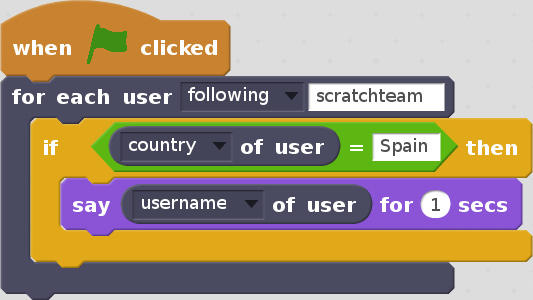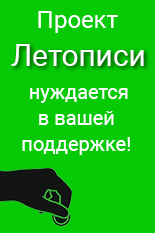Scratchegram-Based Social Inquiry
Содержание |
Scratchegram-Based Social Inquiry (Proposal)
Constructionism shares constructivism's connotation of learning as `building knowledge structures' irrespective of the circumstances of the learning. It then adds that this happens especially felicitously in a context where the learner is consciously engaged in constructing a public entity, whether it's a sandcastle or a theory of the universe... (Papert & Harel, 1991, p. 193).
In our proposal we argue that learning as `building knowledge structures' happens especially felicitously in a context where the learner is consciously engaged in constructing a public entity, that can be discussed, evaluated and reused by other participants to create new entities, and data on the interactions of agents of learning can be presented as a map.
How we can support children as Data Scientists?
In previous paper | Wikigrams-Based Social Inquiry we presented simple methods of learning analytics based on the data on collaboration as well as on the methods of creating static graphs (Graphviz) and dynamic models (NetLogo)
- Network science is an emerging, highly interdisciplinary research area that aims to develop theoretical and practical approaches and techniques to increase our understanding of natural and man-made networks. A working definition of network science is the study of network representations of physical, biological, and social phenomena leading to predictive models of these phenomena
- Network literacy - As our world becomes increasingly connected through the use of networks that allow instantaneous communication and the spread of information, the degree of people’s understanding of how these networks work will play a major role in determining how much society will benefit from this heightened connectivity. In short, a networked society requires network literacy: basic knowledge about how networks can be used as a tool for discovery and decision-making, and about both their potential benefits and pitfalls, made accessible for all people living in today’s networked world.
Public entity or a public artifact can be not only examined or discussed but it can also be used by other people. That is to say a public artifact is inherently shareable. Comparing the known learning communities close to the constructionism theory allows us to see that almost all of them use the idea of a cycle or a spiral of actions performed by agents over objects of actions:
- In the Globaloria Social Learning Network (Reynolds & Caperton, 2009) students perform the following actions with computer games: Play -> Plan -> Prototype -> Program -> Publish.
- In the Scratch Social Learning Network (Brennan, Hernández, & Resnick, 2009) students perform the following actions with Scratch projects: Imagine -> Create -> Play -> Share.
- In the NetLogo Modeling Commons (Lerner, 2014) NetLogo modelers perform the following actions with NetLogo Models:Create -> Run -> Share -> Comment -> Modify -> Create variations.
- In the StarLogo TNG Social Learning Network there are two linked circles (Klopfer, Scheintaub, Huang, Wendel, & Roque, 2009) and StarLogo TNG modelers perform the following actions with StarLogo Models. Research circle: Observe/Collect Data -> Generate Questions -> Test/Tinker/Play -> Observe/Collect Data. Design circle: Design -> Build -> Test/Tinker/Play -> Design.
- In the Looking Glass Social Learning Network (Kelleher & Pausch, 2007) 3D modelers perform the following actions with Alice Models: Create -> Animate -> Remix –> Share.
- In the CloudWorks Teaching Network (Galley, Conole, Dalziel, & Ghiglione, 2010) teachers perform the following actions with clouds (objects on the base of CompendiumLD map) Find -> Share -> Discuss.
- In the WebGrid Social Inquiry Network (Gaines & Shaw, 2012) researchers perform the following actions with grids (objects on the base of Repertoir Grid Test): Display -> Cluster -> Map -> Crossplot -> Matches -> Compare.
The circular consequence of agent’s actions affecting an artifact is close to the theory of object sociality and its application to network communities organization defined by Engeström. We draw in particular on the work of Engeström in terms of the concept of «social objects» and his arguments for the importance of social objects as the key mediating artifacts. Engeström drawing on the work of Knorr-Cetina (Knorr-Cetina, 1999) puts forward an argument for the need to adopt an approach to social networking based on object oriented sociality. He provides examples of successful social networking sites built around social objects. three out of five for the inquiry-based organizational principles of design for the social networks singled out by Engeström deserve special attention as they are compulsory for learning communities:
Mapping communities to Engeström’s principles of design
- Clearly define the social object your service is built around.
- Define the verbs that users perform on the objects, so that it's clear what the site is for.
- Make the objects shareable.
| Community | Clearly define the social object | Define the verbs that users perform on the objects | Make the objects shareable |
|---|---|---|---|
| Globaloria http://globaloria.com/ | Computer Game | Play -> Plan -> Prototype -> Program -> Publish -> Play | Shareability |
| Scratch https://scratch.mit.edu/ | Scratch project | Imagine -> Create -> Play -> Share -> Reflect -> Imagine | Shareability - Remix, BackPack |
| NetLogo Modeling Commons http://modelingcommons.org/ | Netlogo model | Create -> Run -> Share -> Comment -> Modify -> Create variations of | Collaboratore |
| StarLogo TNG http://www.slnova.org/ | StarLogo TNG model | Create -> Run -> Edit Incorporate -> Share | ? |
| CloudWorks http://cloudworks.ac.uk/ | Cloud | Find, Share, Discuss | Shareability |
| WebGrid http://webgrid.typed.com/ | Grid | Display -> Cluster -> Map -> Crossplot -> Matches -> Compare | Shareability |
| Letopisi http://letopisi.org/ | Page, Graph | Read -> Create -> Edit -> Connect -> Share -> Read | Each wiki pages is open for editing |
Activities & Logs
In all the above mentioned communities there is a definite social object – a game, a story, a model or other “virtual chips” over which agents perform their actions. Objects or actions can be different, but all agents are permitted to carry actions over one and the same object. If agents perform actions over one and the same object, they become indirectly connected by the social object. The links are similar to those between movie actors, or scientists creating an article, or Wikipedia editors working on a page together. The structure of these social connections is the subject of social network analysis and learning analytics
Termites cycle
It was mentioned in the previous section that actors perform actions over same objects becoming interlinked via this social object in many various situations. Simple actions that students perform over objects of actions in learning communities are very much alike the procedures performed by turtles in a famous Termites model: search-for-chip -> find-new-pile -> put-down-chip
search-for-chip find-new-pile put-down-chip

Termites cycle with Logs

Termites with Log Model was implemented in NetLogo language 5.2 and its source code is available on the Internet http://modelingcommons.org/browse/one_model/4749
This simplest model for sociograms creation based on the actions with social objects can be applied to various collaboration situations.
Scratch spiral
imagine what they want to do, create a project based on their ideas, play with their creations, share their ideas and creations with others, reflect on their experiences

Letopisi.org circle

Letopisi.org circle with log

Wikigrams as static graphs (
Dynamic graphs
Scratch Community Blocks
We see a growing interest in the topic of open data from the research Scratch-community. An example is the work Scratch Community Blocks: Supporting Children As Data Scientists.
Just as the design of Logo by Papert and others was fundamentally shaped to support details of the constructionist theory of learning—rather than merely part of an attempt to turn children into programmers—the shift in the locus of data analysis from adults to children is only one visible feature of our approach as designers. Beyond this obvious shift lie two broad goals that parallel key features of successful constructionist learning toolkits in general. Those features are the ability to support learning through making in a social context and the ability to support self-reflection and learning about learning.
Proposal

As a rule modern socio-technical systems in which the collaborative activity is carried out, store the full history of all activities. In general terms, this history(log) of Scratch activity can be presented as a record of a chess or go game, consisting of many moves. Each move contains three required elements:
Agent ID| Object ID| Type of an action (Publishing, Editing, Commenting, Remixing)|
Dynamic Model can be used as a simple and illustrative tool of analysis. During his/her research, a student uses the technique of dynamic agent-based sociograms to:
- Trace how and based on what objects’ links between participants of collaborative productive activity are formed.
- Identify key players and stable biggest cliques, which serve as cores that support the operation of network communities
We believe that visualization of the social structure can support the process of group reflection. A social structure is a significant characteristic in many respects determining the success of collaboration.
We propose to do the following:
- Create several studios and organize their activities
- Collect log data from all studios in the format Agent ID| Object ID| Type of an action (Publishing, Editing, Commenting, Remixing)|
- Convert data to static and dynamic sociograms (Scratchegrams)
- Use sociograms (Scratchegrams) when discussing the results of the studio works
References
- Hill, B. M., & Monroy-Hernández, A. (2017). A longitudinal dataset of five years of public activity in the Scratch online community. Scientific Data, 4, 170002. https://doi.org/10.1038/sdata.2017.2
- Dasgupta, S., & Hill, B. M. (2017). Scratch Community Blocks: Supporting Children As Data Scientists. In Proceedings of the 2017 CHI Conference on Human Factors in Computing Systems (pp. 3620–3631). New York, NY, USA: ACM. https://doi.org/10.1145/3025453.3025847

